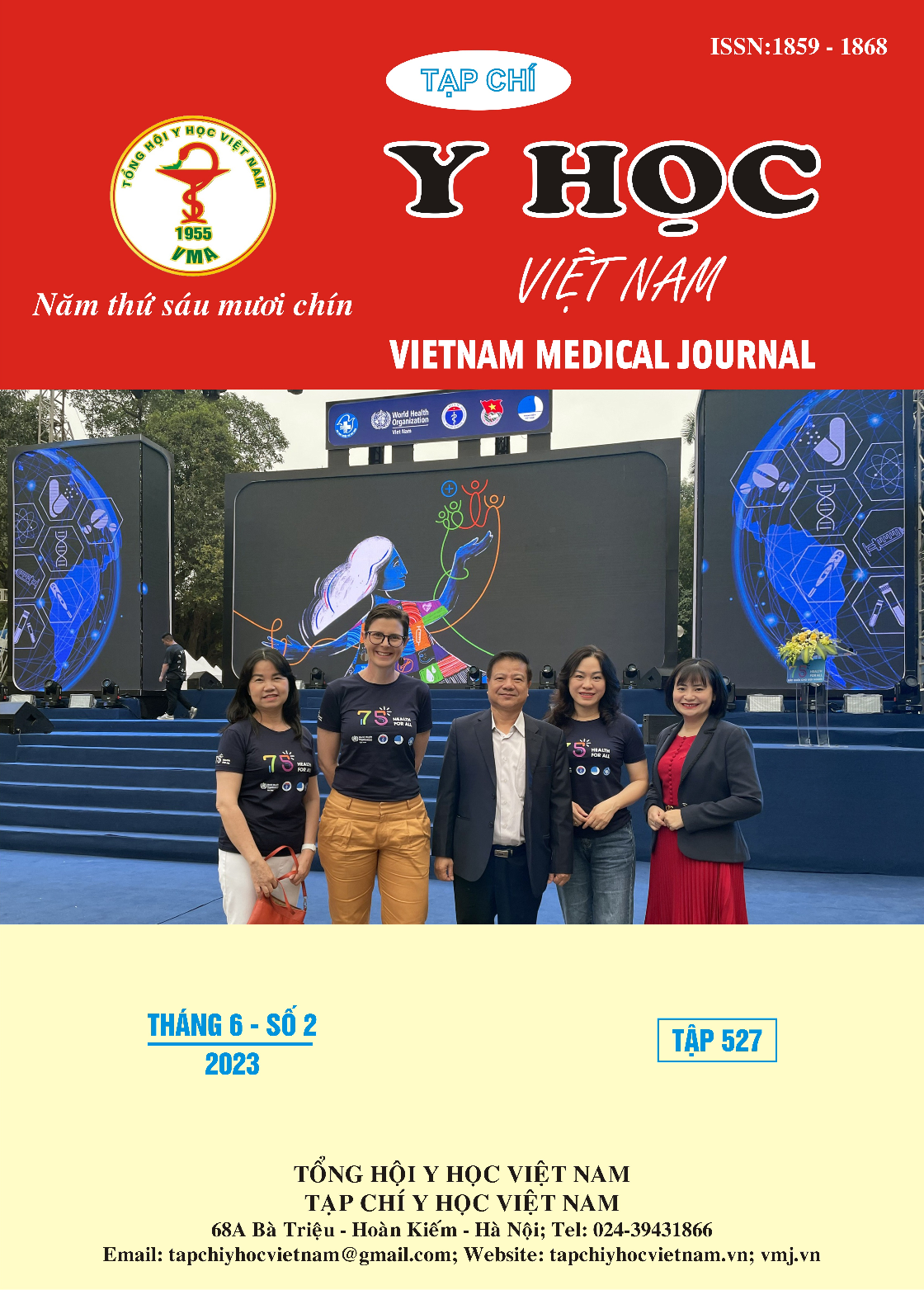ETIOLOGY OF ACUTE PANCREATITIS AND ITS RELATIONSHIP TO THE SEVERITY OF DISEASE AT GASTROINTESTINAL CENTER – BACH MAI HOSPITAL
Main Article Content
Abstract
In recent years, with changes in lifestyle and eating habits, the incidence of AP increases year by year. Determining the cause of pancreatitis is an essential key of the diagnostic evaluation. Different causes can lead to different complications and treatment. Objectives: The etiology of acute pancreatitis, its relationship to some clinical features, severity, and complications of acute pancreatitis. Methods: This retrospective study was carried out at Bach Mai hospital from April 2020 to April 2021, in wich 220 patients with acute pancreatitis were recruited. The etiology of acute pancreatitis was analyzed, its relationship with sex, aging, treatment, severity and clinical outcomes of AP. AP severity was assessed based on adjusted Atlanta scale, CTSI scale and Imrie score at the time of admission. Clinical outcomes included organ failure complication, local complication, ICU admission, median length of stay. Results: The study enrolled 220 patients. causes included gallstones (21, 9.5%), alcohol (108, 49.1%), hypertriglyceridemia (55, 25.0%), and the others (34, 15.45%). Alcoholic AP was the most frequent primary cause. There was higher proportion of alcoholic and hypertriglyceridemic AP in men than in women. Diabetes mellitus were more predominant in hypertriglyceridemic AP (p=0.028). The needs for ICU admission and fluid resuscitation (>3L) were significantly higher in hypertriglyceridemia AP (p=0.000). Severe acute pancreatitis according to Atlanta classification included 18 patients, accounting for 8.2%. There was no significant difference in severity, length of hospital stay, local complications, organ failure between groups of etiologies of acute pancreatitis. Conclusion: Alcoholic AP is the most prevalent etiology of AP. No significantly differences in severity, median length of stay, local complication, organ failure complications were found among groups
Article Details
Keywords
: acute pancreatitis, Atlanta classification
References
2. Cavallini G, Frulloni L, Bassi C, et al. Prospective multicentre survey on acute pancreatitis in Italy (ProInf-AISP): results on 1005 patients. Dig Liver Dis. 2004;36(3):205-211. doi:10.1016/j.dld.2003.11.027
3. Zilio MB, Eyff TF, Azeredo-Da-Silva ALF, Bersch VP, Osvaldt AB. A systematic review and meta-analysis of the aetiology of acute pancreatitis. HPB (Oxford). 2019;21(3):259-267. doi:10.1016/j.hpb.2018.08.003
4. Sekimoto M, Takada T, Kawarada Y, et al. JPN Guidelines for the management of acute pancreatitis: epidemiology, etiology, natural history, and outcome predictors in acute pancreatitis. J Hepatobiliary Pancreat Surg. 2006; 13(1):10-24. doi:10.1007/s00534-005-1047-3
5. Ammann RW, Muellhaupt B. The natural history of pain in alcoholic chronic pancreatitis. Gastroenterology. 1999;116(5):1132-1140. doi:10.1016/S0016-5085(99)70016-8
6. Zheng Y, Zhou Z, Li H, et al. A multicenter study on etiology of acute pancreatitis in Beijing during 5 years. Pancreas. 2015;44(3):409-414. doi:10.1097/MPA.0000000000000273
7. Agarwal N, Pitchumoni CS. Assessment of severity in acute pancreatitis. Am J Gastroenterol. 1991;86(10):1385-1391.
8. Banks PA, Bollen TL, Dervenis C, et al. Classification of acute pancreatitis--2012: revision of the Atlanta classification and definitions by international consensus. Gut. 2013;62(1):102-111. doi:10.1136/gutjnl-2012-302779
9. Võ Thị Lương Trân. So sánh đặc điểm lâm sàng, cận lâm sàng của viêm tụy cấp do tăng Triglycerid máu với viêm tụy cấp do các nguyên nhân khác. Y học thành phố Hồ Chí Minh. 2018;22(2):328-335.


